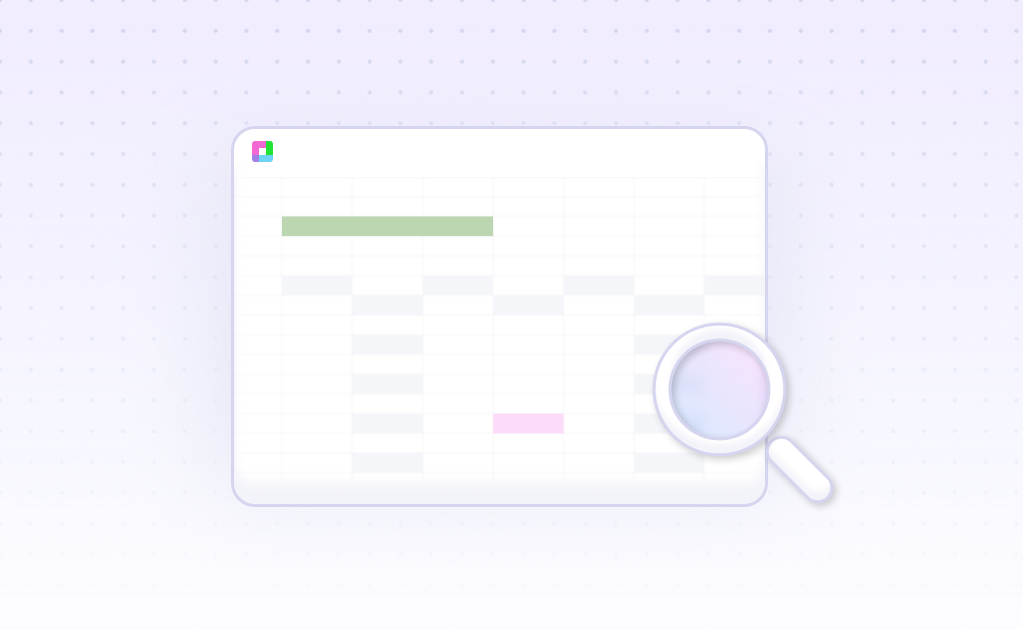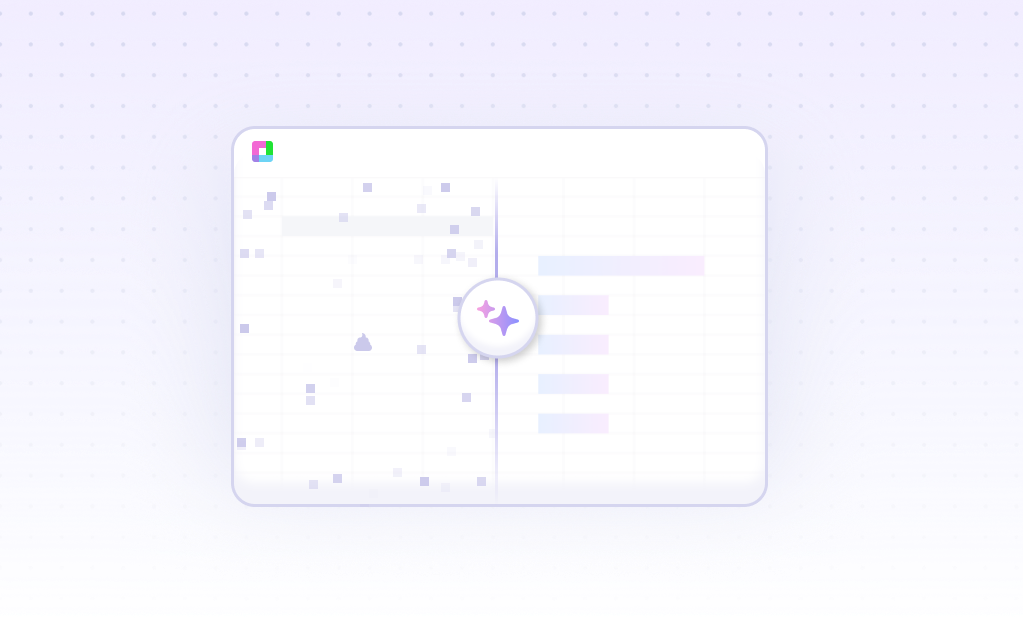
Every nonprofit leader knows the story: You're making a real difference in the world, but proving that impact to stakeholders feels like trying to capture lightning in a spreadsheet. Between program evaluations, donor reports, and grant applications, your impact data is scattered across dozens of files, formats, and frustrated team members.
What if you could transform those overwhelming data collection efforts into clear, compelling narratives that showcase your organization's true value? With AI-powered impact measurement analysis, you can turn complex program data into the stories that secure funding, engage supporters, and guide strategic decisions.
Why Impact Measurement Analysis Transforms Nonprofits
Modern nonprofits need more than good intentions—they need data-driven proof of their effectiveness.
Secure More Funding
Demonstrate concrete outcomes with compelling data visualizations that show donors and grantmakers exactly how their investments create change.
Improve Program Effectiveness
Identify which interventions work best, optimize resource allocation, and scale successful initiatives based on measurable results.
Build Stakeholder Trust
Create transparency with board members, community partners, and beneficiaries through clear reporting of outcomes and organizational impact.
Strategic Decision Making
Use data insights to guide program development, identify expansion opportunities, and make evidence-based strategic choices.
Real-World Impact Measurement Examples
See how organizations like yours are using data analysis to prove and improve their impact.
Education Program Outcomes
Track student progress across multiple metrics: attendance rates, academic performance, graduation rates, and post-program employment. Analyze which teaching methods produce the best outcomes and identify students who need additional support.
Community Health Initiatives
Measure health behavior changes, track vaccination rates, monitor chronic disease management, and assess community wellness indicators. Compare intervention effectiveness across different demographic groups and geographic areas.
Food Security Programs
Analyze food distribution efficiency, track nutritional outcomes, measure food access improvements, and assess household food security changes. Identify optimal distribution points and evaluate program cost-effectiveness.
Youth Development Programs
Monitor skill development, track behavioral changes, measure social-emotional learning outcomes, and assess long-term life trajectory improvements. Analyze which program components have the greatest impact on participant success.
Housing Assistance Impact
Track housing stability rates, measure quality of life improvements, analyze cost savings to other social services, and assess family outcome changes. Demonstrate the ripple effects of stable housing on employment, education, and health.
Environmental Conservation Results
Measure ecosystem health improvements, track species population changes, analyze carbon footprint reductions, and assess community engagement in conservation efforts. Quantify environmental impact alongside community benefits.
How Impact Measurement Analysis Works
Transform your program data into compelling impact stories with our AI-powered analysis tools.
Collect and Consolidate Data
Import data from surveys, case management systems, program records, and partner organizations. Our AI helps standardize formats and identify missing data points automatically.
Define Impact Metrics
Establish clear outcome indicators, set baseline measurements, and create logic models that connect activities to outcomes. AI suggests relevant metrics based on your program type and goals.
Analyze Patterns and Trends
Identify which participants benefit most, discover unexpected correlations, and track changes over time. Advanced analytics reveal insights hidden in your program data.
Create Compelling Reports
Generate professional reports with clear visualizations, impact stories, and data-driven recommendations. Customize outputs for different audiences—from funders to community members.
Types of Impact Measurement You Can Analyze
Comprehensive analysis capabilities for every aspect of nonprofit impact measurement.
Outcome Measurement
Track direct changes in participants' lives: improved skills, changed behaviors, better health outcomes, increased income, or enhanced quality of life indicators.
Output Analysis
Monitor program activities and deliverables: number of people served, services provided, training sessions completed, or resources distributed efficiently.
Impact Attribution
Determine which changes can be attributed to your programs versus external factors. Analyze counterfactuals and control groups to prove program effectiveness.
Cost-Effectiveness Analysis
Calculate cost per outcome achieved, compare program efficiency, and demonstrate return on investment to funders and stakeholders.
Longitudinal Tracking
Follow participants over time to measure sustained change, identify long-term impacts, and understand the durability of program benefits.
Social Return on Investment
Quantify the social, environmental, and economic value created by your programs. Calculate SROI ratios and demonstrate broader community benefits.
Overcoming Common Impact Measurement Challenges
Let's be honest—impact measurement in the nonprofit sector isn't easy. You're dealing with complex human outcomes, limited resources, and stakeholders who want simple answers to complicated questions. Here are the challenges we help you navigate:
The Data Collection Dilemma
Your program staff are focused on serving people, not filling out data forms. Participants may be reluctant to share personal information. And the most meaningful changes often happen months or years after your intervention. Our AI-powered tools help you design efficient data collection processes that minimize burden while maximizing insight.
Attribution vs. Contribution
Did your job training program lead to that participant's new employment, or was it the improving economy? Statistical analysis techniques help you understand your program's contribution to positive outcomes, even when you can't claim full attribution.
Telling Stories with Numbers
Funders want compelling narratives, but also rigorous data. Board members need to understand complex outcomes quickly. Community members want to see how programs affect real people. Our analysis tools help you create different versions of your impact story for different audiences, without losing the underlying data integrity.
Frequently Asked Questions About Impact Measurement
How do I measure intangible outcomes like 'increased confidence' or 'improved wellbeing'?
Use validated assessment tools and scales that translate subjective experiences into measurable data. Pre- and post-program surveys, standardized questionnaires, and behavioral observation checklists can quantify qualitative changes. AI analysis helps identify patterns in this data that might not be obvious to human reviewers.
What if I don't have baseline data from before participants entered my program?
You can still conduct meaningful impact analysis using several approaches: retrospective baseline collection (asking participants to recall their situation before the program), comparison with similar populations, or using program start data as your baseline for tracking changes during participation.
How do I handle participant attrition in longitudinal studies?
Attrition is common in nonprofit programs. Statistical techniques like intention-to-treat analysis, multiple imputation for missing data, and sensitivity analyses help you understand and account for participants who leave your program or don't complete follow-up assessments.
Should I use control groups in my impact measurement?
Control groups provide the strongest evidence of impact, but they're not always ethical or practical in nonprofit settings. Alternatives include matched comparison groups, historical controls, or stepped-wedge designs that allow everyone to eventually receive services while still enabling rigorous evaluation.
How can I measure long-term impact with limited follow-up resources?
Focus on measuring intermediate outcomes that research shows predict long-term success. Use administrative data linkages when possible, partner with other organizations for follow-up, or conduct targeted follow-up with a representative sample rather than all participants.
What's the difference between outputs, outcomes, and impact?
Outputs are what you do (services provided), outcomes are the changes that result (participant improvements), and impact is the longer-term difference you make (community-level change). Effective measurement tracks all three levels to tell a complete story of your organization's effectiveness.
How do I choose the right metrics for my program?
Start with your program's theory of change and intended outcomes. Choose metrics that are specific, measurable, achievable, relevant, and time-bound (SMART). Balance leading indicators (early signs of success) with lagging indicators (final outcomes). AI analysis can suggest additional metrics based on similar programs.
Can I compare my program's impact to other organizations?
Comparison is valuable but challenging due to differences in populations served, program design, and operating contexts. Focus on comparing your program to itself over time, and use benchmarking carefully with similar organizations that serve comparable populations and use similar approaches.
Advanced Impact Measurement Techniques
Sophisticated analysis methods to deepen your understanding of program effectiveness.
Propensity Score Matching
Create valid comparison groups when randomized control trials aren't feasible. Match participants with similar individuals who didn't receive services to estimate program impact.
Difference-in-Differences Analysis
Account for external factors that might influence outcomes by comparing changes in your participants to changes in a comparison group over the same time period.
Theory-Based Evaluation
Test the assumptions underlying your program model. Understand not just whether your program works, but how and why it works for different participants.
Mixed-Methods Integration
Combine quantitative outcome data with qualitative insights from interviews, focus groups, and case studies to create a complete picture of program impact.
Frequently Asked Questions
If your question is not covered here, you can contact our team.
Contact Us




